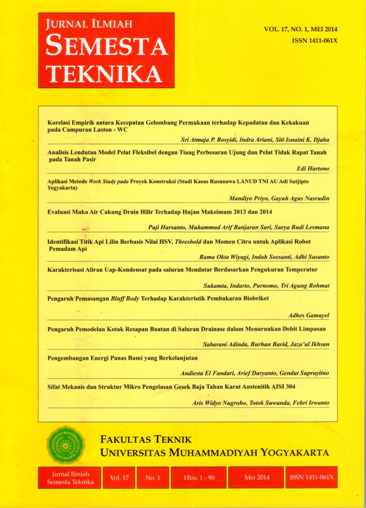Sifat Mekanis dan Struktur Mikro Pengelasan Gesek Baja Tahan Karat Austenitik AISI 304
DOI:
https://doi.org/10.18196/st.v17i1.413Abstract
The aim of this study is to investigate experimentally the microstructural properties and welding strengths of the friction welded joints using austenitic stainless steel (AISI 304) base metal. The experiments were carried out using a beforehand designed and constructed experimental friction welding set-up. Firstly, the welding experiments were under different friction pressure (1,38-4,14 MPa) and upsetting pressure (6,90-8,27 MPa). Later, the strengths of the joints were examined by tension test and the results were compared with those of the base metals. Microstructures in the interfaces of the joints were also obtained and examined. The results show that porosities were observed in bondline zone for all specimens. As the friction pressure increased, the fully plastically deformed zone becomes increased. Tensile test results indicated that, generally the joint strength is increased with an increase of the friction pressure and the upsetting pressure. The friction welded joint strenght were found to be lower than that of the base metal. The detailed fractographic observation confirmed that the brittle rupture occurred at the joint zone.
Downloads
Published
How to Cite
Issue
Section
License
Semesta Teknika is licensed under a Creative Commons Attribution 4.0 International License.
Authors who publish with this journal agree to the following terms:
- Authors retain copyright and grant the journal right of first publication with the work simultaneously licensed under a Creative Commons Attribution License that allows others to share the work with an acknowledgement of the work's authorship and initial publication in this journal.
- Authors are able to enter into separate, additional contractual arrangements for the non-exclusive distribution of the journal's published version of the work (e.g., post it to an institutional repository or publish it in a book), with an acknowledgement of its initial publication in this journal.
- Authors are permitted and encouraged to post their work online (e.g., in institutional repositories or on their website) prior to and during the submission process, as it can lead to productive exchanges, as well as earlier and greater citation of published work (See The Effect of Open Access).









